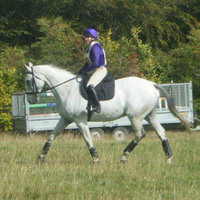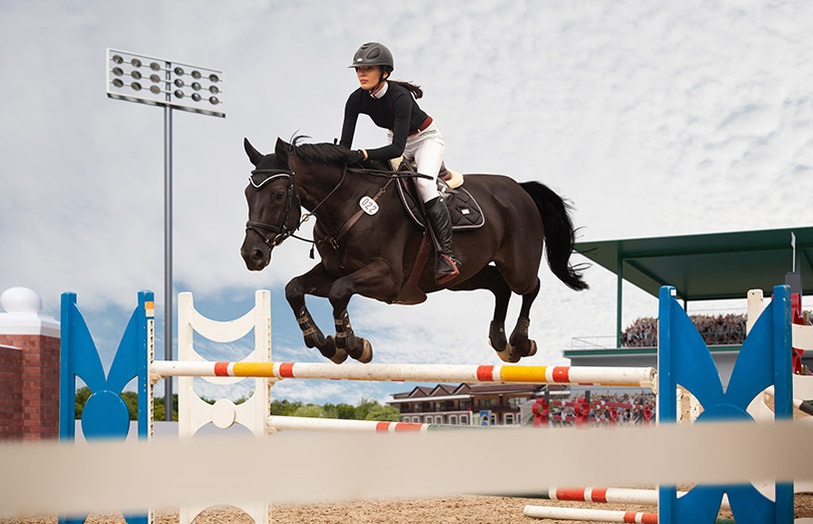
Are You & Your Horse Ready For Bitting Advice? The Steps You Need To Consider First
Equestrian Advice & Guides All Disciplines
Build your business profile for FREE and expose your services to thousands of potential clients!
Create my profile now!
‘Making the Butterflies Fly in Formation’ is the title of a research study published in The Sport Psychologist in 1999. Although a small study looking at the experiences of both elite and non-elite athletes, in this case swimmers, it demonstrated an interesting phenomenon. Both types of athlete experienced anxiety in some form or other, but the elite athletes viewed the effect of this anxiety differently to the non-elite athletes. In essence, the elite athletes believed their anxiety actually facilitated their performance – it made them better.
With an understanding of how we as individuals experience anxiety and stress, we can increase our awareness of how we interpret our experience of these emotions and start to make them work for us. The second part of the study in 1999 looked at how those athletes who experienced debilitating anxiety could adjust their interpretation of the experience to improve their performance. How could they make their butterflies fly in formation?
Read on to discover how you can get your own butterflies to fly in formation, but not just in any formation, in the formation that allows you to perform at your best.
Stress is usually talked about in negative terms. We complain about being “stressed” at work or while studying for exams or prior to a competition. However, stress should not be seen as entirely negative. It provides the mental and physical effort needed to motivate us to do things and to do things well. Without an element of stress in our lives, we would become bored and psychologically stale.
The terms ‘arousal’ and ‘anxiety’ are used to differentiate between the types of stress that we experience. Arousal is considered the positive aspect of stress. The more aroused you are, the more interested and excited you are about a situation. Anxiety is considered the negative aspect of stress and can cause you to “choke” or under perform.

Too much stress can result in symptoms that are both physical, psychological and behavioural.
It’s important to note that these symptoms may present themselves whether you have too much good stress (arousal) or too much bad stress (anxiety)! Take a moment to reflect on this – the symptoms are the same whether you are feeling good or bad.
Interestingly, some research has also suggested that the type of anxiety you experience predicts the effect it will have on your performance. In general, if you experience psychological symptoms (what’s going on in your head) they are more likely to have a negative effect on your performance than if you experience physical symptoms (what’s going on in your body), which is more likely to have a positive impact on performance.

There are four main theories to explain how arousal or stress affects performance:
Individuals can be classified as either experiencing trait or state anxiety. Someone who has a predisposition to be anxious in a wide variety of situations and in all areas of their life exhibits trait anxiety. An individual who experiences a temporary negative stress reaction in certain situations (public speaking for example) is considered to exhibit state anxiety.
Interestingly, individuals who experience anxiety on a regular basis (trait anxiety) often cope better in stressful situations because they are used to regularly experiencing anxiety. For them, it is a part of day to day life.
Research in sports on competitive state anxiety (a temporary stress reaction to a competition) found that the effect on performance is likely to vary between individuals depending on whether they view their “nerves” as helpful or not. So back to our butterflies – elite performers were more likely than non-elite performers to interpret any competitive anxiety as facilitating successful performance. Those who believed that anxiety limited their ability to perform tended to experience higher levels of psychological anxiety and lower performance.

Self-confidence (known as self-efficacy in sports research) is an individual’s belief in their ability to perform successfully. Those with high levels of self-confidence will try harder and persist longer. Those with lower levels of self-confidence tend to experience greater levels of anxiety and give up when things get difficult.
If you have limited experience in a particular area, watching others perform successfully is especially effective at increasing levels of confidence. The underlying principle is “they can do it, so I can”. Identify someone who you respect and is skilled in the area you wish to develop. Watch this person and model their actions and behaviours. If you are feeling nervous or anxious, imagining how this respected person would act and attempting to think and behave like them can help.

If you are already skilled or experienced in the area, remembering or watching previous good performances or successful completions of a task can be a useful source of self-confidence. Knowing you have done it before and can therefore do it again helps boost feelings of confidence. Often the temptation is to reflect on or watch replays of things that have gone wrong to analyse why and how. This constant reliving of mistakes can seriously damage your self-confidence. Instead, devote energy to analysing why things went well and how that can be replicated.
The final element to increasing self-confidence is self-talk. Positive self-talk helps individuals focus on their performance, stay in the present and maintain concentration levels. It is particularly important to consider how what you are saying to yourself might be limiting your success. Someone who starts off saying to themselves “I know I’m going to mess this up” will, more often than not, encounter problems. It is worth reflecting that the brain cannot tell the difference between what is real and what is imagined. Research indicates that when an individual engages in vivid and absorbing imagery the brain interprets this as identical to the actual event happening. Not convinced? Try experimenting with repeating the words “strong and powerful” to yourself over the course of a day and notice how you felt. Next day repeat the words “weak and feeble” to yourself. How did that feel? What you say to yourself day in, day out matters!
Some of the most common self-defeating thoughts can be categorised as follows:
The most effective way to combat these negative, debilitating thoughts is to use a method known as “thought stopping”. Thought stopping relies on you recognising when negative thoughts are entering your mind and using either the word “stop” or imagining a stop sign in your head blocking the path of these thoughts. The next step is to insert more positive thoughts and images in their place.

Make a list down one side of a piece of a paper of your most common self-defeating thoughts, and then on the other side, write a positive or perspective changing statement. Refer to this as often as you need to until it becomes a learned response as soon as a negative thought pops into your head. You are now well on your way to getting your butterflies in fly in formation.
You can find the second part of this two part article here > Getting Your Butterflies To Fly In Formation: A Guide To Using Anxiety To Benefit Performance - Part 2
The author of this article, Alison Lincoln, is a writer, coach and freelance groom. To find out more about her and her coaching work, please visit her website > https://www.alisonlincoln.co.uk/

